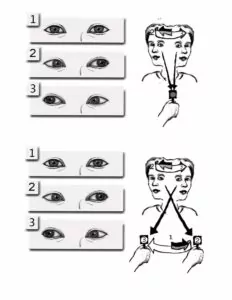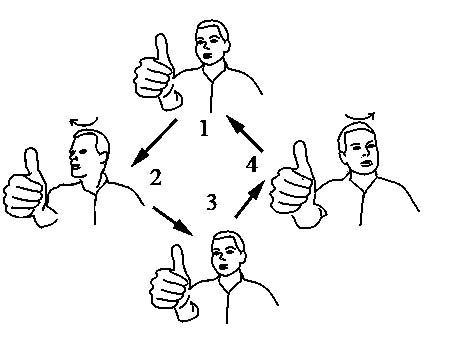vestibular rehab exercises pdf nhs
Keeping the head still move eyes up and down 2. Vestibular exercises merely stimulate the vestibular apparatus.

Tendon Glide Exercises Hand Therapy Hand Therapy Exercises Physical Therapy Exercises
Vestibular rehabilitation exercises This is a specific form of physiotherapy which may be suggested if your movements are very affected.

. Vestibular rehabilitation wwwuhcwnhsuk - 2 - From this assessment the audiologist will develop an individualised treatment plan that will include exercises to be performed both in the department and at home which combine specific head and body movements with eye exercises. A common neuro-otological approach for managing such symptoms is to prescribe medication that suppresses vestibular function. Keeping head still move eyes left to right 3.
It is important to complete your exercises this often every day. General Information for Eye Exercises Target must remain in focus not blurry and appear stationary while head is in motion. Repeat times per session.
The management plan may include. For best results focus the eyes on an object or target in each direction you turn your head including when facing forwards. Your vestibular rehabilitation exercises are designed to make you experience mild.
Treatment may also include increasing. At first slow then quick. This is essential to the re-programming and if you do not bring on the dizziness at all the exercises will not work.
Do sessions per day. As a general rule you should build up gradually from one set of exercises to the next. C Focus on fingers at arms length.
You may find it helpful to complete your exercises at specific times each day. Vestibular rehabilitation therapy VRT is an exercise-based program for reducing the symptoms of disequilibrium and dizziness associated with vestibular pathology disease or disorder. Cawthorne-Cooksey Vestibular Exercises Section A.
Vestibular Rehabilitation Exercises Level 2. Sitting first then when more confident standing. Later with eyes closed.
Exercises l Make sure that you are in a safe environment before you start any of the exercises to reduce the risk of injury. Vestibular rehabilitation exercises A fact sheet for patients and carers Vestibular compensation Vestibular compensation is a process that allows the brain to regain balance control and minimise dizziness symptoms when there is damage to or an imbalance between the right and left vestibular organs balance organs in the inner ear. Exercises for long-term balance problems.
The Brandt-Daroff exercises should be performed for two or three weeks and a suggested schedule is as follows Time exercise duration. L Exercises should be performed 3 times a day. During vestibular rehabilitation therapy VRT home exercises are a vital part of treatment.
Exercises to improve standing. Brandt-Daroff exercises These exercises are a method of treating Benign Paroxysmal Positional Vertigo BPPV. Speed of eye movement should be increased as long as the target stays in focus.
The next set of exercises. Vestibular rehabilitation exercises A fact sheet for patients and carers Vestibular compensation Vestibular compensation is a process that allows the brain to regain balance control and minimise dizziness symptoms when there is damage to or an imbalance between the right and left vestibular organs balance organs in the inner ear. Extra Vestibular Rehabilitation Exercises Procedure Make sure you are seated safely before starting the exercises.
These exercises are designed to. The exercises you will be shown and taught by the physiotherapist are designed to re-programme your brain to tune-out the dizzy sensations. They succeed in 95 of cases but more arduous than the Epley manoeuvre.
Should an exercise make you feel off balance dizzy or unstable practice this exercise for the remainder of the. At first slow then quick a up and down b from side to side c focus on finger moving from 3ft to 1ft away from face 2 Head movements. Vestibular rehab exercises pdf nhs Saturday April 2 2022 Edit.
Exercises A In bed 1 Eye movements. Cawthorne-Cooksey Vestibular Exercises Section A. Let symptoms subside plus seconds with each repetition.
Vestibular Rehabilitation Exercises Level 1. Exercises to improve standing balance. Focus on your index finger as you bring it from arms length away up to your nose then out again.
Position tilt head down 30º. L All exercises should be performed slowly to begin with and gradually progress to faster movements. Please do all six movements 2-3 times each day.
When there is an injury or abnormality in any portion of this system the brain must be retrained or taught to interpret correctly the information it receives. Level 1 Eye movements head kept still a Look up then down. The exercises will bring on your symptoms but in a very controlled way.
Eye and head movement exercises. Vestibular compensation Vestibular compensation is a process that allows the brain to regain. The brain interprets information gained from the vestibular or balance system.
Repeat 10-20 times Do 2-3 times daily 4. Vestibular Rehabilitation Exercises Level 1. Vestibular Rehabilitation is an exercise-based programme to encourage the nervous system to compensate for problems in the inner ear.
How difficult should my exercises feel. If you use glasses wear them while performing exercises. What is vestibular rehabilitation.
You might find that your dizziness problems get worse for a few days after you start the exercises but you should persevere with them. Exercises manoeuvres suitable for self management of positional vertigo. It helps to retrain the brains ability to adjust the balance problem and is known as compensation and adaption.
Be careful when you start to move after you have completed the exercises. A bend backwards and forwards b turn from side to side B Sitting 1 and 2 - as above. Within the vestibular or balance system.
To enable this to work fully you will need to be dedicated to doing exercises regularly through. Following a thorough examination a specialist Physiotherapist will develop a personalised home exercise programme for you. HEAD CIRCLES Sitting in a comfortable position begin moving your head in a circular motion with your eyes open.
As they are designed to challenge your balance system you may feel some. These exercises are designed to allow your vestibular system to compensate in a. We recommend that you complete your exercises three times a day if possible.
The management plan may include. Keeping head still move eyes left to right 3. Slowlyquickly move head rightleft with eyes openclosed.

Vestibular Neuronitis Vestibular Neuritis Conditioner Inner Ear

Wrist Exercises Mobilityexercises Wrist Exercises Hand Therapy Exercises Hand Therapy

Evidence Based Program Otago Exercise Program

Brain Spine Foundation Vestibular Rehabilitation Exercises

Tendon Glide Exercises Hand Therapy Hand Therapy Exercises Physical Therapy Exercises

Wrist Exercises Mobilityexercises Wrist Exercises Hand Therapy Exercises Hand Therapy

Vestibular Rehabilitation Giddiness Exercises Youtube

Wrist Exercises Mobilityexercises Wrist Exercises Hand Therapy Exercises Hand Therapy

7 Home Remedies Exercises To Stop Vertigo Emedihealth Video Video Epley Maneuver Home Remedies For Vertigo Vertigo Remedies

Vestibular Neuronitis Vestibular Neuritis Conditioner Inner Ear

Gross Motor Exercise Worksheets Chicago Occupational Therapy Occupational Therapy Kids Pediatric Physical Therapy Activities Occupational Therapy Activities

Vor Exercise Gaze Stabilisation Exercises Ear Balance And Eustachian Tube

Urban Wired Hand Therapy Wrist Exercises Finger Exercises


